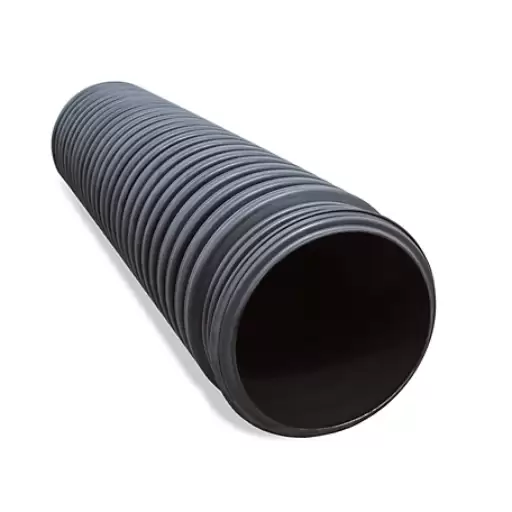The choice of piping material plays a crucial role in civil engineering and construction fields to guarantee the durability, lifetime, and efficiency of several applications. This paper extensively compares HDPE double-wall corrugated pipes and polyvinyl chloride (PVC) pipes in terms of their technical properties, performance measurements, and application suitability for different projects. Using factors like robustness, malleability, resistance to chemicals, and simplicity of installation, we will assist industry professionals in developing the necessary information to make informed assessments that can be made based on particular ecological or working conditions only. After exploring both materials’ pros and cons and enlightening readers about where each is best suited to infrastructure projects, we shall conclude by analyzing ideal scenarios for using HDPE or PVC pipes in infrastructure projects.
What are the key differences between HDPE and PVC pipes?
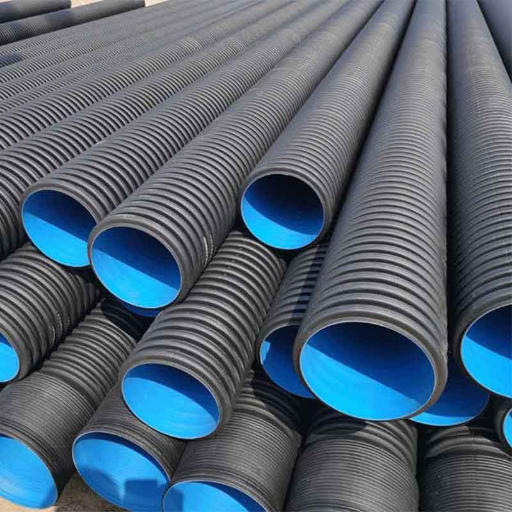
Material composition of HDPE pipes vs PVC pipes
HDPE pipes come under a thermoplastic polymer obtained from ethylene. HDPE is known for a higher strength-to-density ratio and fair flexibility. The molecular structure of HDPE consists of chains that are tightly packed with very little branching. The structure resists stress cracking, thereby providing durability. Being exceptionally resistant to impact and environmental stresses, HDPE is suitable for applications such as potable water systems, gas distribution, and industrial piping.
PVC pipes are composed of a rigid thermoplastic polymer obtained from vinyl chloride monomers. The molecular structure of PVC includes chlorine atoms, which give it rigidity and a form of inherent fire resistance. PVC pipes are light in weight and have reasonable tensile strength, i.e., suitable for low-pressure water distribution, drainage systems, and electrical conduit applications. Often, they are supplemented with additives such as stabilizers, fillers, and plasticizers to enhance performance under certain conditions.
HDPE pipes are most flexible and longest-lived under pressure and permeate many chemical resistances, while PVC pipes, on the other hand, are rigid and cheap, suitable for a wide range of temperatures. The ultimate choice between HDPE and PVC thus lies with the pressure capacity, working environment, and budget for the application in question.
Durability and lifespan of HDPE vs PVC pipe systems
In terms of durability, HDPE pipes can resist impacts to a high degree and are extensively flexible to accommodate ground movement, freeze-thaw, or the crush of external pressures without cracking. Hence, HDPE pipes are good substitution candidates for areas affected by seismic activities or shifting soils. In addition, said pipes do a great job resisting corrosion since they generally consist of chemical molecules that are non-reactive with most chemicals, thus degradation of the product is kept to a minimum. HDPE pipes can last above 50 years under the right circumstances, and some researchers believe that they can last for even 100 years.
In contrast, PVC pipes are rigid, which imparts strength under static loads but may tend to crack when subjected to shock or movement of the soil. Nevertheless, PVC pipes will be at their best where the temperature is fixed, and soil conditions remain constant over a long period. Like HDPE pipes, PVC pipes resist corrosion and chemical attack, but the former are more prone to degradation when exposed to UV radiation for long periods unless they are well shielded. Otherwise, they will generally remain serviceable when properly handled and installed for around 50-70 years.
Thus, depending on their suitability for installation and use over a long time, these two materials promise long-term reliability. Because they are flexible and resilient, HDPE pipes remain the best choice under dynamic and demanding conditions, while PVC pipes can offer good economic value and reliability where conditions are not so variable. Hence, it is a choice that demands careful evaluation of the environmental factors, load conditions, and the intended maintenance regime to optimize the durability and lifespan.
Comparison of costs: HDPE Double wall corrugated pipe vis a vis PVC
HDPE double-wall corrugated pipes are usually costly initially (about $1.50 to $3.00 per foot) but have the advantage of gaining cost efficiency in the long run due to greater durability, whereas PVC pipes are cheaper keeping their initial cost about $0.90 to $2.50 per foot but may demand higher maintenance and installation costs.
|
Aspect |
HDPE Price |
PVC Price |
Longevity |
Upkeep |
Setup |
|---|---|---|---|---|---|
|
Cost/ft |
$1.50–$3.00 |
$0.90–$2.50 |
High |
Low |
Easier |
|
Lifespan |
50+ years |
50–70 years |
High |
Moderate |
Moderate |
|
Flexibility |
High |
Low |
High |
Low |
Moderate |
|
Resistance |
High |
Moderate |
High |
Moderate |
Moderate |
Which type of pipe is better for drainage systems?
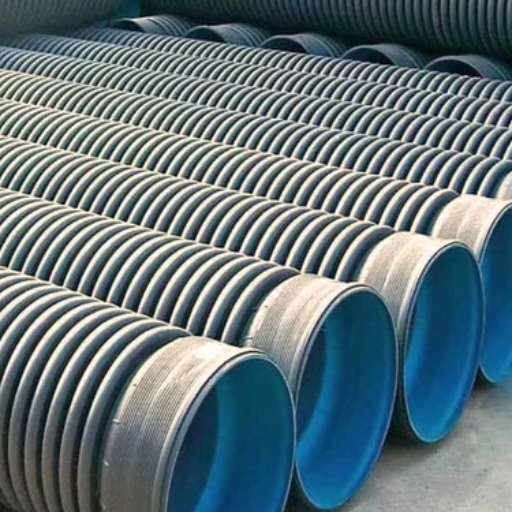
Advantages of using HDPE corrugated pipes for drainage
- Lightweight installation is facilitated by these pipes: HDPE corrugated pipes are much lighter compared to conventional materials such as concrete or steel. Hence, transportation and installation costs are lower. Their lightweight physique also makes their handling easier in site zones, reducing labor demands and shortening project completion time. Industry data suggest that HDPE pipes may weigh anywhere from 6 to 8 times less than concrete pipes of the same diameter.
- Greater Lifespan and Durability: HDPE corrugated pipes resist corrosion, abrasion, and chemicals. With such features, they are long-term in service even in aggressive environments consisting of acidic and alkaline soils and offensive wastewater. Research indicates that HDPE pipes last from 50 to 100 years under normal conditions, perfect cost-effective solutions for the long term.
- Better Hydraulic Performance: Since HDPE corrugated pipes feature smooth interior walls, water flow is rarely impeded, thus offering superior hydraulic efficiency. Essentially, it facilitates the use of pipes with smaller diameters without a reduction in flow capability, thus saving material costs. Tests revealed that HDPE pipes may possess a Manning’s coefficient as low as 0.010, and thus, they considerably improve flow efficiency compared to traditional materials.
- Environmental Sustainability: Often, HDPE corrugated pipes are manufactured using recycled materials and are recyclable at the end of their lifecycle. Due to their production processes, they yield a lower carbon footprint than concrete or metal alternatives, which is an environmentally friendly approach. Besides this, their longevity causes fewer replacements, thus saving environmental resources.
- Resistance to Structural Loading and Ground Movements: Their flexible design allows HDPE pipes to resist heavy loads and slight ground displacements without cracking or breaking. The corrugated exterior assures very high ring stiffness that allows for excellent load distribution. This makes them very suitable even in very demanding cases such as infrastructure drainage below a highway or railway, where the load-bearing capacity matters a lot.
Comparing the performance of HDPE and PVC drainage pipes
While HDPE pipes have more advantages for flexibility, chemical resistance, and durability, PVC pipes are best in rigidity, cheapness, and tolerance to higher pressures.
|
Aspect |
HDPE |
PVC |
|---|---|---|
|
Flexibility |
High |
Low |
|
Durability |
High |
Moderate |
|
Resistance |
High |
Moderate |
|
Cost |
Higher upfront |
Lower upfront |
|
Pressure |
Moderate |
High |
|
Installation |
Easier |
Moderate |
Advantages of Utilizing PVC Pipes in Drainage Systems
PVC is a very popular drainage pipe due to its great advantages of being cheap, strong, and sometimes even under high pressure. PVC’s main advantage is cost savings; hence, initial costs are low when compared to other types of pipe material production. This cost efficiency is an advantage when it comes to large-scale drainage works that require piping over long distances.
Another great feature is their comparatively high resistance to different chemical compositions, household chemical wastes, and industrial wastes, thus allowing them to stay for a long time inside drainage systems for homes and commercial places. The pipes are resistant to rigidity and strength and keep their shape even under normal water pressure within tests, which constitutes an advantage in high-pressure drainage scenarios.
The smooth interior surface reduces friction and flow resistance, thus ensuring efficient water discharge without much build-up of debris. Light, heavy, and lightweight handling and transportation also speed up the installation process. Further contributing to their value in drainage infrastructures are relatively low maintenance requirements and durability-lifespan ranging from more than 50 years if better maintained.
When installed and maintained well and used within proper limits, PVC pipes are very durable and reliable, thus becoming one of the modern drainage systems’ best choices.
How does installation differ for HDPE and PVC pipes?
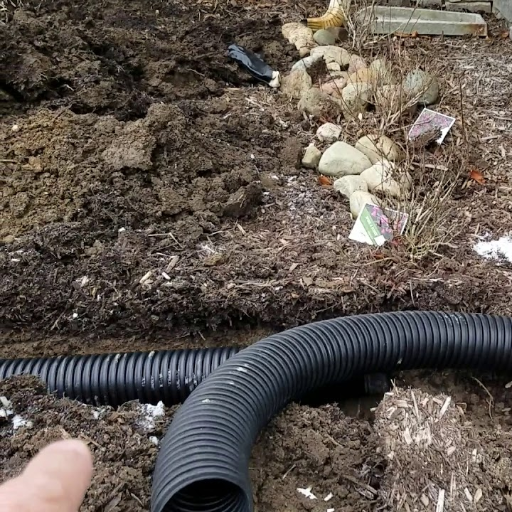
Installation of HDPE double-wall corrugated pipes is a process that involves several steps.
- Site Preparation: Assess the installation site to ensure the absence of obstacles and debris. Mark the trench line for pipe placement, ensuring compliance with local codes and regulations on depth and distance from other utilities.
- Trench Excavation: Use proper equipment to dig a trench. The trench should be wide enough to accommodate the pipe and for proper backfilling. A range of 2-4 feet depth of the trench is normally suitable, depending on the diameter of the pipe.
- Bed Preparation: After excavating, prepare a solid foundation for the pipe using sand or fine gravel. This helps prevent deformation during installation and also supports the pipe
- Pipe Inspection: Before inserting them into the ground, it is important to inspect these HDPE double-wall corrugated pipes for any damage or defects. Also, make sure that they are clean, dry, and free of contaminants.
- Pipe Placement: Gently lower pipes into a trench while being careful not to damage them. Ensure uniform alignment of pipes so as not to interrupt flow continuity. Sometimes, a sling or cradle that holds onto joints without stressing them much may be necessary.
- Joint Connection: Connect the pipes according to the manufacturer’s guidelines; this is usually done by using rubber gaskets or corrugated pipe fittings to ensure a watertight seal.
- Backfilling: After fixing all these pieces into their right spots, slowly fill up your trenches with soil material acquired from excavation activities carried out earlier on. Do not forget to check if there are no large stones or rubbish which could spoil your tube inside while compacting soil placed after its laying whatsoever to avoid possible future sagging;
- Final Grading: Once you are through with backfilling, gently grade sloping land so that the surface becomes even like it was before construction started, if required, but more importantly, to ensure that there is no water accumulation near the site.
Follow these steps closely, and you will successfully install HDPE double-wall corrugated pipes efficiently for long-term performance and reliability in drain applications.
PVC Pipe Installation Procedure
The laying of PVC pipes is a systematic method that requires accuracy and adherence to set standards for the sake of strength and operational ability. In the beginning, pipes are measured and cut to the requested length. For best results, use a pipe cutter or a fine-toothed saw, keeping in mind that the cuts must be clean and straight. Grinding the edges to remove any burrs or roughness is necessary, as the debris can interfere with the installation process. This preparation is extremely important; irregular pipe edges might compromise the integrity of a joint, causing leakage or worse, structural weakness.
After laying out the pipes and making sure that they are well aligned, prepare the joints by applying a good quality PVC primer on the inner side of the fitting and on the outer side of the pipe. This softens the material so that it will bond strongly. While the primer is still wet, apply PVC solvent cement. Then, push the pipe into the fitting while giving it a slight twist so that the cement will distribute evenly. Hold the joint firmly for about 10 to 15 seconds to avoid the pipe slipping out. It is important to always follow the manufacturer’s instructions in regard to drying times before subjecting the piping system to any pressure testing or operation.
After all these steps, pressure testing is really the last and most significant step to ensure reliability and safety in a PVC piping system. When the glued joints have set long enough, typically 24 Hours unless otherwise stated, conduct the hydrostatic or pneumatic pressure test, according to the local Codes and recommendations of the manufacturer. The testing should be applied slowly at first so as not to subject the system to a sudden surge, which could cause havoc. Inspecting all the joints and connections for any signs of leaks during the process is vital. Proper documentation of the procedure and results is recommended, especially for large-scale installations or for compliance purposes. By following this procedure carefully, a strong PVC piping system is set, geared toward long-term performance and dependability.
HDPE versus PVC installation tools and fittings required
The installation of HDPE and PVC requires different types of equipment and fittings based on differences in the pipe materials and how they are installed. Being flexible and capable of thermal fusion joining, HDPE pipes need special machines for joining them, either by butt fusion or electrofusion, as well as pipe cutters and heavy-duty clamps to accurately align the pipes for jointing and to exert a huge amount of pressure to ensure a high-strength joint. HDPE fittings include those for electrofusion joining, such as couplers, tees, reducers, and saddle fittings, all developed for this thermal fusion technique.
PVC pipes, being rigid and light in weight, are most commonly installed using solvent cement welding or mechanical joints. The tools for installing PVC pipes include pipe cutters, deburring tools, and brushes for primer and solvent cement. PVC fittings include couplings, elbows, tees, and unions, designed to make assembly easy in residential and industrial works. Unlike in HDPE, where it is the fusion thermal process that joins, it is in PVC a chemical process; thus, the preparation and cleaning of components becomes the most crucial step to having a leak-proof joining.
Both HDPE and PVC systems further require manufacturer instructions and environmental constraints like temperature and pressure ratings applied to each to ensure longevity and performance. These pipe-installation processes are specific to materials, highlighting the necessity of having the right tools and fittings that fit the peculiarities of each pipe type.
What are the maintenance requirements for HDPE and PVC pipes?
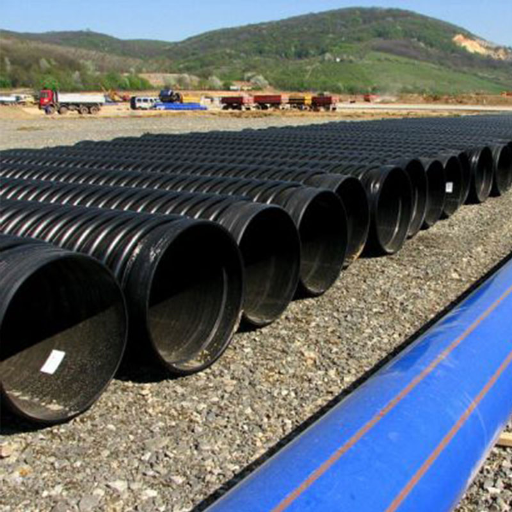
Longevity and maintenance of HDPE pipes
HDPE pipes, famously known for their strength and long life, enjoy popularity in many industries. An HDPE pipe withstanding the test of time for 50 to 100 years under normal operating conditions owes much of that to its resistance to corrosion, chemical degradation, or impact. Therefore, while steel or concrete pipes get affected by things like soil conditions, moisture, and chemical exposure, HDPE pipes stand against all these external forces, greatly decreasing their wear and tear over time. These pipes prove to be very beneficial in hostile environments where other materials would quickly undergo rapid degradation. The flexibility and tensile strength of HDPE pipes help resist any ground movements that might be induced by seismic activity, thereby adding further to their merits.
Periodic maintenance of HDPE pipes is important to increase their life span and useful functioning. One advantage of the HDPE system is that it requires virtually no maintenance, mainly because its smooth internal surface prevents deposits from building up and thereby minimizes pressure loss as time goes by. Regular inspections of the pipeline are indispensable; ultrasonic tests and profile tests may be among the relevant testing methods necessary in certain applications, notably where pressures are high or where abrasiveness or corrosiveness of the flowing fluids have to be considered. Often, minor damages, like slight abrasions on the surface or joints requiring attention, can be restored without incurring extensive downtime or replacement by common fusion or repair methods.
The adaptation of new installation and monitoring methods contributes to the performance and maintainability of HDPE piping systems. Such methods encompass trenchless installation techniques, most notably horizontal directional drilling (HDD), thereby minimizing environmental disturbance and installation-induced stress on pipes. Moreover, the integration of smart sensors and monitoring systems inside HDPE networks pits real-time monitoring of pressure, flow rates, and leak possibilities against long-term damages, thereby optimizing system performance. Together with HDPE’s inherent material properties and maintaining technology development, this further presents it as a promising solution for modern piping infrastructure.
Upkeep and repair of PVC pipes
The maintenance and repair of PVC (Polyvinyl Chloride) pipes require specific protocols for the pipes to have a long life and to perform efficiently. PVC pipes are generally considered very strong; however, if a pipe is not properly installed, is subjected to external strains, has prolonged exposure to UV radiation, or comes under attack from chemicals, it could wear down with the passage of time. Maintenance can be carried out effectively only by the regular inspection of the PVC pipes for cracks or leaks, or discolouration, which can be an early indication of either material stress or environmental degradation.
The types of repair to consider mainly depend on the extent of the damage. For slight leaks, you may solve your problem by utilizing a solvent cement that chemically bonds the damaged area to restore pipe integrity. For severely cracked or broken sections, the accepted repair procedure is to remove the damaged portion and install a new one, using couplings or unions. The glue and cleaner used for PVC should be compatible to ensure a strong and lasting bond. Components should be set and cured adequately per the manufacturer’s instructions to prevent premature failures.
With repair technologies advancing, trenchless renovation means are also starting to be employed more on PVC systems. These processes minimize excavation and disruption and thereby cut costs; methods include pipe bursting and cured-in-place pipe (CIPP) lining. Remote-viewing inspection tools, like CCTV pipe inspections, increase the precision of diagnosing work to be done efficiently.
In general, maintenance of PVC pipe systems calls for a preventative attitude along with the appropriate use of both conventional and innovative methods. Timely intervention on possible weaknesses will very much extend the working life of the network and thus lead to abbreviated long-term expenditures and enhanced reliability in the varied fields of application.
Common issues and solutions for HDPE and PVC pipe systems
The field of HDPE (High-Density Polyethylene) and PVC (Polyvinyl Chloride) pipe installations faces diverse challenges. They mostly pertain to the stresses that develop in the material, the environment, and installation deficiencies. If these abnormalities are ignored, the system fails in terms of integrity, performance, and operational life.
1. Thermal Variations and Expansion
Temperature variations that cause both HDPE and PVC pipelines to expand and contract are some of the most common issues. Displacement and stress carry heavy forces along the pipe in the long run, which sometimes may lead to structural failure.
Solution:
Introduce expansion joints into the piping system to permit the pipelines to move in tension, and anchoring systems designed to restrict pipelines from moving in the opposite direction. These calculations must be carried out by engineering during the design phase on the premise that the pipe is utilized within a particular temperature range.
2. Chemical Degradation
HDPE and PVC are resistant materials, but long exposure to incompatible substances, such as strong oxidizing agents that produce an oxidation effect or hydrocarbons that cause cracking of the surface, shrinking, and ultimately damage the durability of the system, is detrimental.
Solution:
Use appropriate pipe material depending on the transported medium, and carry out periodical inspections for early signs of chemical degradation. Provide protective coatings/linings to pursue a higher resistivity in a corrosive environment.
3. Poor Jointing Techniques
Bad performing fusion or jointing process can cause the formation of weak points in the pipeline. The leaking of the joint might also be caused by improper solvent welding in the PVC installation.
Solution:
Ensure that all personnel involved are trained in the fusion and welding processes. For HDPE systems, all fusion parameters, such as temperature, pressure, and alignment, should be checked using calibrated apparatus. For PVC, apply adhesives in strict accordance with the manufacturer’s recommendations and do not press joints until proper curing time has elapsed to guarantee a watertight seal.
4. External Pressure and Load Impacts
Excessive external pressure and load can cause both pipe materials to deform or collapse, for example, heavy vehicular traffic and inadequate backfill compaction upon burial.
Solution:
Carry out a proper geotechnical investigation before commencement of installation works and ensure that trenches are properly prepared. Use protection measures like reinforced bedding materials or concrete encasements will help from damage due to external loads in the long run.
5. Microbial or Biofilm Build-Up
Microbial activities may cause biofilm build-up inside the pipes of the PVC system. This phenomenon results in a reduction in flow efficiency, increased pumping costs, and possible contamination of the pipeline.
Solution:
Cleaning and flushing periodically with environmentally safe biocides or mechanical pigging can fight biofilm development. Also, installing filtration systems at critical points in the network may reduce the introduction of contaminants.
6. UV-Degradation
Long-term UV exposure may develop degradation in PVC pipes, with surface cracking, a reduction in strength, and so forth. With HDPE, however, the prolonged exposure does affect structural properties of the polymer at a much slower rate.
Solution:
Use UV-stabilized materials or coatings for above-ground installations. Alternatively, above-ground pipes may be buried or covered to give protection from UV radiation.
By taking these steps and appropriate remedies, operators can minimize the common problems faced by HDPE and PVC pipe systems, ensuring a reliable and cost-effective service even under harsh conditions. They reinforced the sustainable maintenance practices further by allowing monitoring technologies that identify problems at launch before they advance to be sizable.
Which type of pipe is more suitable for high-pressure applications?
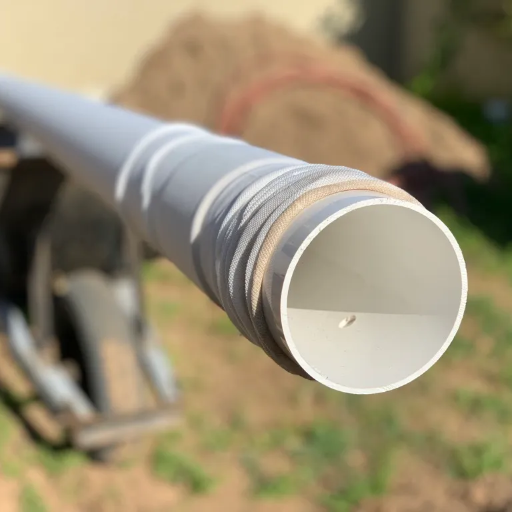
Performance of HDPE pipes under pressure
From my wide experience, HDPE pipes show the highest pressure performance as a direct consequence of some peculiar material properties. The HDPE has an intrinsically high tensile strength and flexibility-from which it gains the ability to be subjected to internal and external pressures without it deforming or failing. It also exhibits very high resistance to stress cracking, which is very often the limiting factor of conventional piping. Hence, they are largely used in high-pressure systems such as municipal, industrial, and irrigation.
Joint systems within HDPE pipe offer superior pressure durability. Unlike rigid materials such as steel and PVC, joints of HDPE are usually ‘heat-fused’, thereby developing an inseparable, permanent joint with no leakage paths. This characteristic pointedly enhances its reliability under varying pressure situations, which are otherwise critical to the integrity of HDPE pipe systems. If well installed and subjected to working pressures as per recommendations, HDPE pipes may live for many decades, with a life expectancy of over 50 years under normal conditions.
I have found a good resistance offered by HDPE to certain environmental stress factors, including temperature variations and chemical exposures that may adversely affect pipe performance in a pressure situation. The pipe retains structural stability over a wide temperature range and resists corrosive substances better than others. The entire package enables HDPE pipes to perform under pressure even in the toughest circumstances, clearly establishing them as a modern engineering and utility choice.
Capacity of the Pressure PVC Tube
Pressure PVC tubes are expected to bear huge internal pressures depending on the diameter, wall thickness, and classification under which the material falls. The pressure rating of the tubes generally specifies their pressure capacity, usually denoted as “Class” or with a PSI value. For instance, Class 315 pipes are rated for a maximum pressure of 315 PSI and therefore can withstand sustained internal pressures under standard conditions.
The capacity depends on standard factors like pipe schedule, e.g., Schedule 40, Schedule 80, referring to the thickness of pipe walls relative to pipe diameter. Greater pressure capabilities are achieved for thicker schedules like Schedule 80 at the expense of smaller internal diameters, limiting internal flow capacity. Performance of the pipe is also governed by temperature because typical PVC tubes are rated for continuous use at 73°F (23°C). With an increase in temperature, the pressure rating usually decreases since the PVC material softens at elevated temperatures.
In comparison, an average Schedule 40 2-inch diameter PVC pipe can endure a maximum working pressure of approximately 280 PSI at 73°F, but Schedule 80 pipes of the same diameter can resist pressures of up to 400 PSI. On the design aspects, factors such as surge pressures, fittings, and long-term degradation of material properties are accounted for by engineers in order to ensure operational performance concerning safety and efficiency.
It is this technical configuration that keeps pressure PVC tubes attractive as an economical yet strong option for everything from municipal water distribution to agricultural irrigation schemes. Combining maximum life with precision engineering standards, PVC pressure pipes continue to be critical entities in industrial and civil infrastructure projects.
The best practices for pressurized pipe systems
Applying best practices in pressurized pipe systems guarantees operational reliability, longevity, and efficiency. Selecting materials is the principal consideration. The pipe must be chosen for its application, paying attention to pressure capacity, chemical resistance, and environment. PVC is fine for most applications, but it has limitations in hot weather.
Appropriate design for the system ranks second in importance. Maximum operating pressure, flow rates, and surge allowance calculations are required. Incorporation of pressure management devices like pressure relief valves or air release valves may reduce hydraulic pressure spikes that increase the risk of system failure.
Installation best practices require careful handling and placement to avoid damage or misalignment within the system. Ensuring proper sealing of all joints and fittings – adhesives, seals, or gaskets appropriate to the material – will further assist the long-term operation.
Regular monitoring and maintenance will help in identifying all wear, leaks, or pressure variations within the system so that any necessary repair can be effected immediately. Regular checks with the help of acoustic sensors or other non-destructive testing techniques can save huge disruption.
Finally, adherence to industry standards and local authorities will guarantee the best safety and operational provisions. Keeping abreast of new materials, technologies, and design philosophies ensures benefits in the planning and operation phases of pressurized pipe systems.
Reference sources
-
Piedmont Plastics- Choosing Between HDPE and PVC – A Detailed Guide
-
Trenchless Technology-PVC vs HDPE: Pros, Cons, and Benefits of Each
-
Central Turf & Irrigation Supply- PVC vs Corrugated Pipe: Choosing the Best Conveyance
Frequently Asked Questions (FAQs)
Q: What are the key disparities between HDPE double-wall corrugated Pipes and PVC pipes?
A: The major differences between HDPE double-wall corrugated pipes and PVC ones are their configuration, flexibility, and purpose of use. HDPE pipes bend easily and have dual walls: a smooth inner wall and a corrugated outer one, making them perfect for a range of drainage applications. In contrast, PVC pipes, which are usually used in household water supply systems, are very firm.
Q: Which pipe should be used in PVC or HDPE double-wall corrugated pipe drainage systems?
A: Due to their ability to adapt to changing conditions and last long, most people prefer HDPE double-wall corrugated pipes over any other type when laying down drainage. They rarely crack under pressure and can withstand chemicals and abrasive materials that are common in stormwater and wastewater systems. On the other hand, rigid PVC pipes are ideal for plumbing works, including supplying water of drinking quality.
Q: Can I use PVC pipes for a French drain?
A: When constructing French drains, many people opt for lightweight and flexible HDPE double-wall corrugated pipes instead of readily available PVC pipes. This patterned design ensures high efficiency with reduced clogging rates.
Q: What advantages do HDPE Double Wall Corrugated Pipes bring about in stormwater management?
A: HDPE double-wall corrugated pipe usually characterizes high durability, flexibility, resistance to chemicals and abrasives, which also proves advantageous for stormwater management. It is also lightweight, hence less cumbersome during installation compared to other types of conduits. The dual-layered design further gives it extra strength, leading to its longer service life.
Q: How do HDPE double-wall corrugated pipes compare to PVC pipes in terms of installation?
A: Compared to the installation of PVC pipes, HDPE double-wall corrugated pipes are generally much easier to install because they are very flexible and light in weight. They can change direction so that they go around objects and, therefore, require fewer joints and fittings than the PVC variety, which has a fixed length. On the other hand, the installation of PVCs needs more precise measurements and fittings since they are rigid, making them labor-intensive.
Q: Are HDPE double-wall corrugated Pipes suitable for high-pressure applications?
A: Normally, HDPE double-wall corrugated pipes can’t be used in high-pressure settings; this is because they are mostly designed for low-pressure systems like drainage, stormwater management, and sewage. As such, if one wants high-pressure systems such as water supply networks, there are many alternatives, including using PVC pipes, among others.
Q: Can HDPE Double Wall Corrugated Pipes be used for sewage systems?
A: Yes, HDPE double-wall corrugated pipe can be used in sewage systems. It is not easily destroyed by chemicals and abrasive substances commonly found in wastewater streams. It also doesn’t clog easily, hence lasting longer under demanding conditions than some other pipe materials.
Q: What advantages do I gain by using HDPE Double-Wall Corrugated Pipes instead of traditional cast iron pipes?
A: The benefits offered by using HDPE double-wall corrugated pipe instead of traditional cast iron ones include lower weight, an easier installation process, thus less time-consuming activity, and highly improved resistance to corrosion and chemicals. Additionally, its greater flexibility lowers the chances of breakage while extending its application range beyond what any other type can take care of.
Q: How does the cost of HDPE double-wall corrugated pipes compare to PVC pipes?
A: The cost of HDPE double-wall corrugated pipes and PVC pipes can vary depending on their use and prevailing local prices. Although upfront expenses for HDPE plumbing may often be slightly higher, its toughness, ease of fitting, and low maintenance costs make it cheaper in the long run. On the other hand, PVC piping is less costly initially, but subsequent installation and upkeep will require more money.
Q: Can I use HDPE double-wall corrugated Pipes for residential and commercial applications?
A: Yes, you can use HDPE double-wall corrugated pipes for both residential and commercial applications. They are versatile options for various drainage systems, stormwater management, and sewage systems, making them feasible for different sorts of developments.



